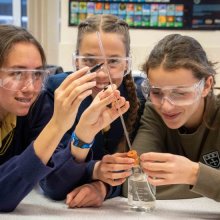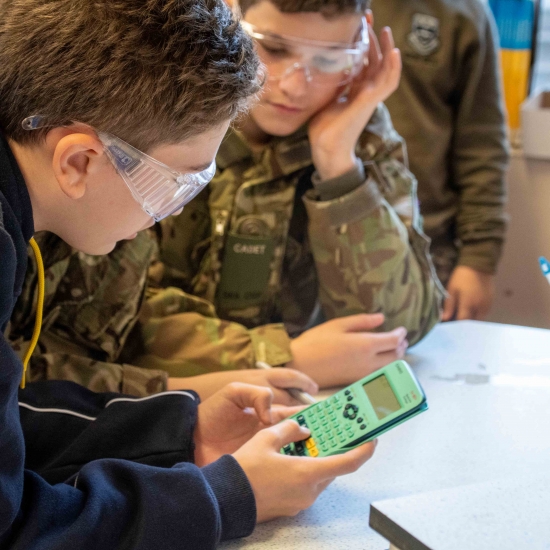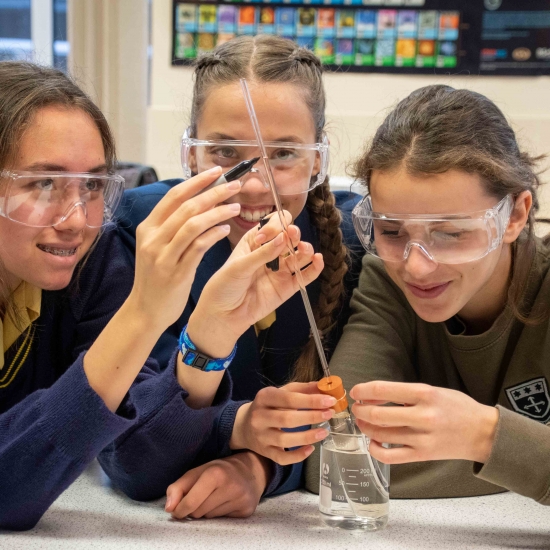
Things have been heating up in Year 9 Science classes this week, as the students took on the challenge of creating their own thermometers.
As part of their study into thermal energy, the students used equipment common to any laboratory to construct an instrument complete with a scale capable of measuring temperature.
They first studied the way in which thermometers work and the physical changes that occur as the temperature increases and decreases. They also discussed the applications of thermometers in everyday life, including their importance in engineering.
After devising a way to create an accurate scale on the thermometer that they were intending to build, the students got to work.
Rubbing alcohol and water were combined in a boiling tube, topped with a bung and containing a long, slim glass tube. The boiling tube was then placed in a beaker of iced water and the lowest temperature recorded was marked on the slim glass tube. The tube was then plunged in a beaker of boiling water and the water level in the slim tube marked once again. The distance between these two lines was then divided up to create a scale to be used to measure temperature.
It was a complex task for the students, requiring effective teamwork and communication, as well as perseverance in the face of a challenge. Developing these skills are an important aspect of the High Performance Learning initiative in place at St Edward’s.
To test their thermometers, the class placed them in the incubator (on a secret setting). The temperature was recorded by Mrs Hammond before each group of students used their instruments to estimate the temperature of the incubator.
The winning team were impressively accurate, being just 1 degree celsius different to the commercially produced thermometer.


























